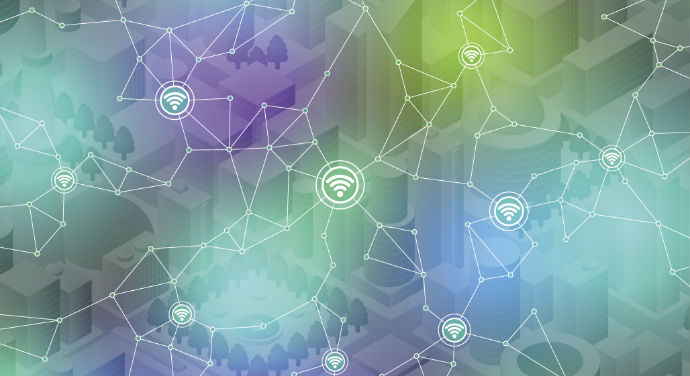Deep Fiber Networks Help Close Digital Divide, Supports IoT
Deep fiber networks potentially support the future of telemedicine and mHealth by providing a denser network infrastructure.

Source: Thinkstock
- Healthcare organizations are digitizing their health IT infrastructure to support an increased adoption of Internet of Things (IoT) devices, mHealth, and telemedicine initiatives. Mobile devices need to be supported by a robust and reliable network, which is why organizations need to look to the future of 5G and deep fiber networks to support future IT infrastructure deployments.
Many organizations are currently researching and testing methods to increase the potential of wireless and broadband network speeds to benefit the healthcare industry.
A recent Deloitte report emphasized the need for network improvements but claims that up to $150 billion needs to be invested in 5G and deep fiber to accommodate the projected growth and use of wireless in the coming years.
“Unlocking the full potential of 5G in the United States rests on a key assumption: the extension of fiber deep into the network,” Deloitte report authors stated. “Despite the demand and potential economic benefits of fiber deployment, the United States lacks the fiber density in access networks to make the bandwidth advancements necessary to improve the pace of innovation and economic growth. Increased speed and capacity from 5G will rely on higher frequencies and network densification.”
Fiber is at the center of wireless advancement as more organizations are demanding consistently fast and reliable internet, according to the report.
READ MORE: Added Technology Expands Telemedicine at Children’s Mercy
“While 5G standards focus on a new generation of technology and capabilities for speed and flexibility to connect the IoT provide mobile broadband, and supply critical communications, the lifeblood of its potential will come from the wireline network with the ultimate goal to extend fiber deep into the network near the customer,” the report authors wrote.
“Deep fiber also supports the national infrastructure imperatives of increasing choice between providers for residential and business consumers and closing the digital divide.”
The digital divide significantly impacts rural populations and telemedicine.
A recent letter released by the American Medical Informatics Association (AMIA) to the FCC highlights the impact of the digital divide on mHealth.
Inadequate access to broadband technology for mHealth reduces vulnerable groups from participating in mHealth treatments, according to AMIA.
READ MORE: 5G Network Infrastructure Improves Telemedicine, Remote Care
“AMIA supports many of the proposals described in the chairman’s Digital Empowerment Agenda, meant to improve the digital divide’s impact on health, including development of Gigabit Opportunity Zones and his Mobile Broadband for Rural American plan,” AMIA stated in its letter.
Deep fiber can potentially bridge the digital divide by facilitating high speed access to businesses and homes while supporting 4G and 5G sites.
Deloitte explained in its report that previous generations of wireless technology (i.e., 3G and 4G) relied on broader blocks of spectrum and improved spectral efficiency to generate higher speeds and increased capacity.
“Increased speed and capacity from 5G will rely more heavily on the use of higher frequencies and densification,” Deloitte stated. “Deploying fiber closer to the customers (i.e. deep fiber) can enable efficient transport of increased wireless traffic from that densification.”
Many wireless vendors are already testing 5G technology over the high frequency RF spectrum.
Qualcomm, Ericsson, and AT&T began collaborating earlier this year to conduct interoperability testing and over-the-air field trials based on the expected 5G New Radio (NR) specifications underdevelopment by the 3rd Generation Partnership Project (3GPP).
The 3GPP provides organization partners with an environment to produce and test new telecommunication network standards which will form the basis of the global standard. The organization aims to help move the global mobile ecosystem from 4G LTE to a faster 5G deployment based on standards-compliant 5G NR infrastructure.
Deloitte suggested that many vendors are purchasing and testing high-frequency spectrum to solve 5G capacity issues.
“Rather than building macro towers with mid or low band spectrum, carriers will deploy lower powered small cells and rely on homespots and hotspots each with a coverage radius measured in meters versus kilometers,” Deloitte report authors explained. “Densification of access points with small coverage areas imply that fewer users share the network capacity produced by 4G or 5G small cells, generating enormous performance gains.”
“Such densification is challenged, given current fiber deployment limitations and the upgrade costs and deployment cycle times associated with traditional network architecture,” the report continued. “Small cells need connections to fiber/cable backhaul to realize capacity and speed potential.”
“Homespots and hotspots require high-speed broadband connections to homes and business,” report authors added. “Without deeper fiber deployment, carriers will be unable to support the projected four-fold in mobile data traffic increase between 2016 and 2021.”
The report stated that the US does not currently have the fiber investment to support the expansion and utilization of deep fiber to support the 5G standard. This lack of support can potentially widen the digital divide as technology becomes more advanced.
Major fiber investment is needed, according to Deloitte. The report suggested that funding needs to be focused among three broad categories; fiber for wireless densification, fiber to increase broadband competition, and fiber to support rural/underserved geographies.
Increase in fiber for these key areas can significantly lessen the digital divide and increase the effectiveness of telemedicine and mHealth.
